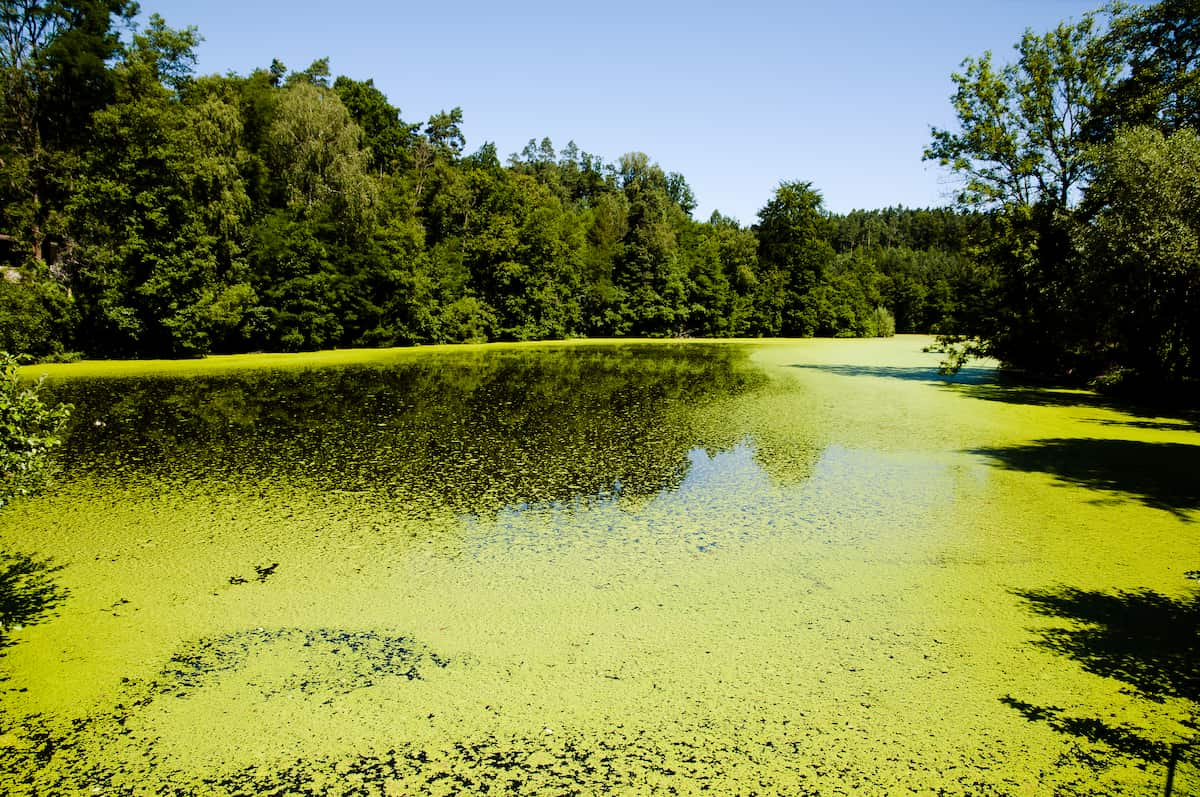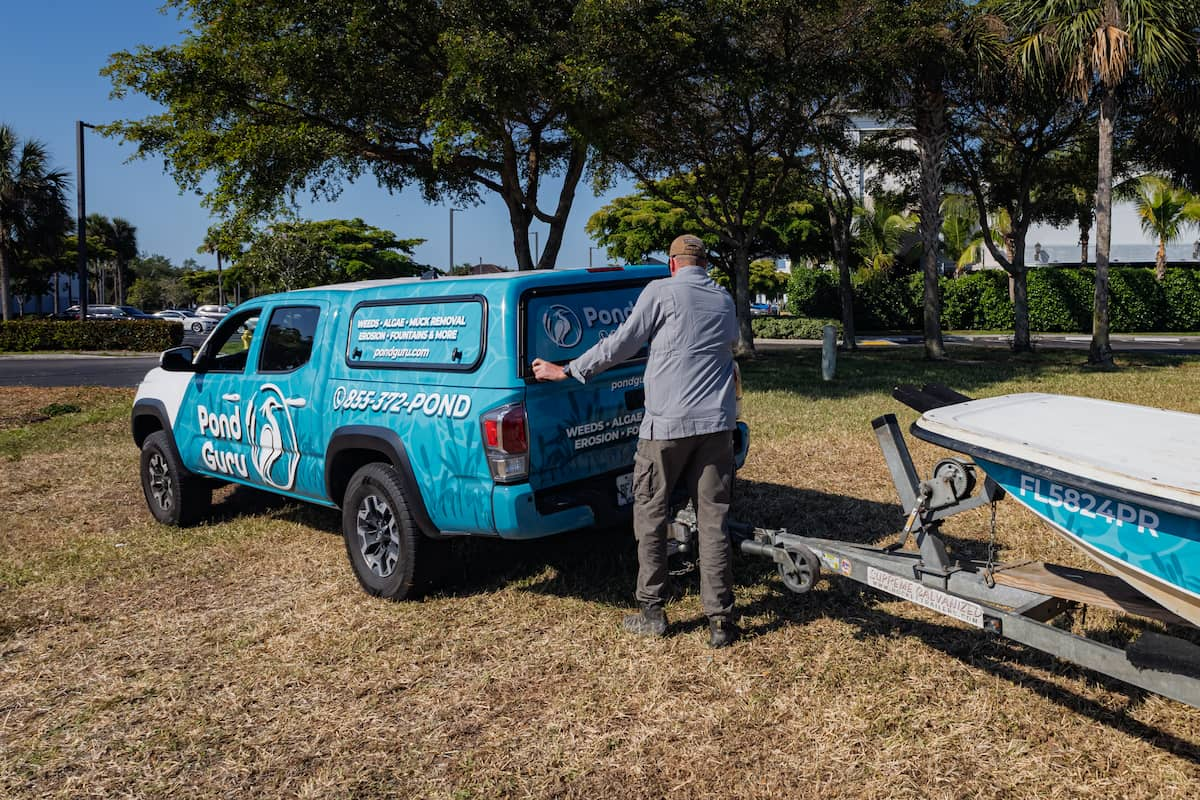
If you’re looking for how to get rid of algae in pond naturally, these methods focus on prevention and ecosystem balance.
Floating and submerged aquatic plants absorb excess nutrients and shade out algae. Choose:
These plants also provide shelter for fish and enhance pond aesthetics.
When decomposed, barley straw releases compounds that can inhibit algae growth. It’s a low-impact, long-term control method used in commercial lake algae control settings and backyard ponds alike.
Wondering what eats algae in a pond? Stocking your pond with the right species can help maintain balance:
These algae grazers reduce overgrowth and contribute to a more natural control strategy.
Many people search for what kills algae fast, but some products do more harm than good. Copper-based algaecides, for instance, are effective but can be dangerous in high concentrations — especially for koi or sensitive species.
Safer solutions include:
Always follow dosage guidelines carefully, and never apply treatments during the heat of the day or when oxygen levels are low.

For large properties — such as golf courses, HOAs, or estate homes — algae management requires more than just spot treatments. That’s where professional lake management services like Pond Guru come in.
Accurate algae identification (planktonic, filamentous, or cyanobacteria)
Custom treatment plans tailored to your pond’s volume, fish population, and use
Safe and effective tools including mechanical harvesters, targeted chemical use, and eco-restoration strategies
Ongoing monitoring and prevention programs to ensure long-term results
If you’ve been struggling with murky water, floating mats, or green scum, it’s time to take action — the right way. At Pond Guru, we specialize in commercial lake algae control and natural pond algae control solutions that protect your fish and restore beauty to your waterbody.
Schedule a site evaluation with our expert team to:
We proudly serve private homeowners, HOAs, golf courses, and property managers throughout the region. Let’s bring your pond back to life — without harming what’s in it.
Aeration, beneficial bacteria, and natural treatments like barley straw or low-impact algaecides can reduce algae safely.
Use aeration, aquatic plants, biological treatments, and introduce algae-eating fish where permitted.
Too much algae can deplete oxygen, especially during die-off, leading to fish stress or death. Some types (like blue-green algae) can also be toxic.
Fish like grass carp and tilapia, as well as snails and certain invertebrates, help control algae naturally.
A professional team like Pond Guru offers algae identification, safe treatment options, and long-term management plans to prevent regrowth.
If you’re staring at a murky green pond and wondering where the crystal-clear water went, you’re not alone. Green pond water is one of the most common issues faced by pond owners, HOA boards, golf course superintendents, and property managers. It’s unsightly, frustrating, and potentially harmful to fish if left untreated.

In this guide, we’ll break down what causes green water in ponds, whether green pond water is bad for fish, and how to clear green pond water fast using safe and effective methods. We’ll also explain when it’s time to call in the experts at Pond Guru for a site evaluation and long-term pond maintenance solution.
Green pond water is typically caused by a rapid increase in free-floating algae, specifically planktonic algae. These microscopic organisms multiply quickly in warm, nutrient-rich, and sunny environments.
The result is water that looks like pea soup and lacks the clarity and oxygen your pond needs.
Many pond owners ask, is green pond water bad for fish? The answer depends on severity and duration.
Moderate green water is not necessarily dangerous, but excessive algae growth can lead to:
If left untreated, it can cause fish kills and a total breakdown of the pond’s ecosystem.

If you’re searching for how to clear green pond water fast, here are safe, effective strategies:
Aerators increase oxygen and circulate the water, disrupting algae’s ability to bloom. A properly sized aeration system is a key part of any green pond water fix.
Biological treatments with beneficial bacteria help consume excess nutrients, depriving algae of food.
Peroxygen-based products or pond dyes can reduce algae while being safe for fish.
Diluting nutrient-heavy water can provide short-term relief.
If you prefer eco-friendly solutions, here’s how to clear green pond water naturally:
Natural solutions take time, but they support long-term pond health.

Sometimes, DIY treatments aren’t enough. For large or persistently green ponds, it’s time to consult a professional.
Our team works with residential clients, HOA boards, golf courses, and commercial properties to provide comprehensive lake management services that restore water clarity and fish health
The best treatment is prevention. Here’s how to avoid green water in ponds altogether:
Professional lake management services can also help you implement long-term strategies for water clarity and ecosystem balance.
If you’re tired of murky, algae-filled water and want your pond to look and function its best, the solution starts with the right approach. Whether you want to know how to clear green pond water fast or prevent it from returning, Pond Guru has the tools, expertise, and commitment to help.

Schedule a site visit today and let us restore your pond’s clarity without compromising fish health or the surrounding environment.
Green pond water is caused by an overgrowth of algae fueled by excess nutrients, sunlight, and poor circulation.
Use aeration, beneficial bacteria, and natural algaecides. Avoid copper-based treatments that can harm fish.
In excess, it can deplete oxygen and stress fish, especially overnight.
Yes, with aquatic plants, barley straw, and improved pond maintenance practices.
If your pond stays green despite treatments or you manage a larger body of water, contact us for a site visit and custom treatment plan.